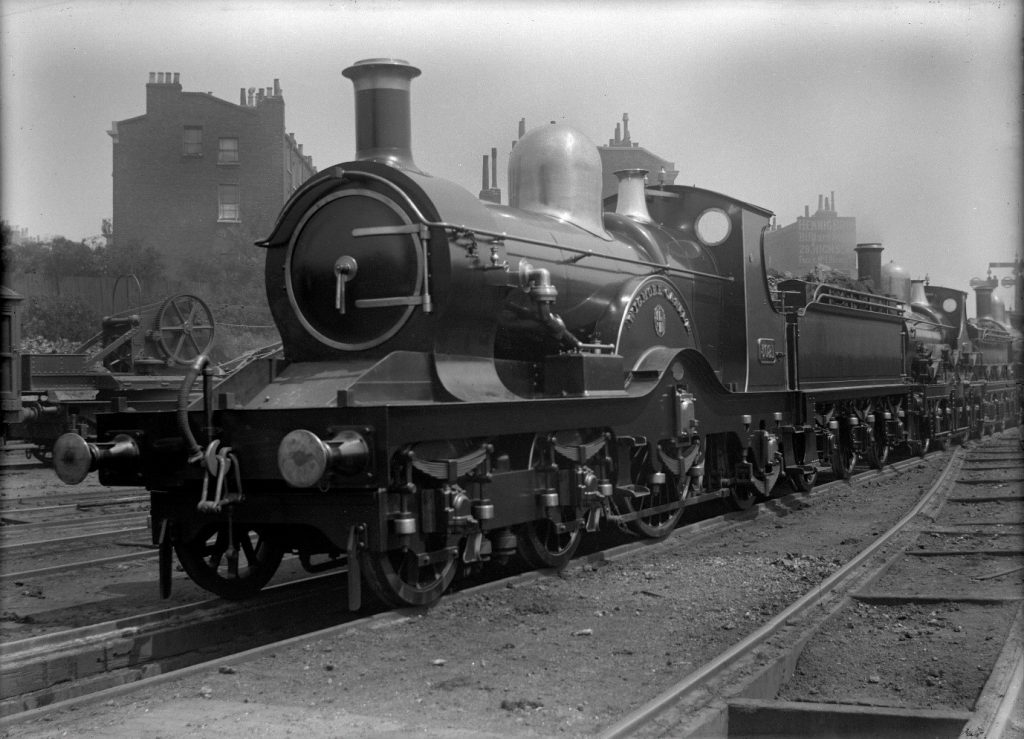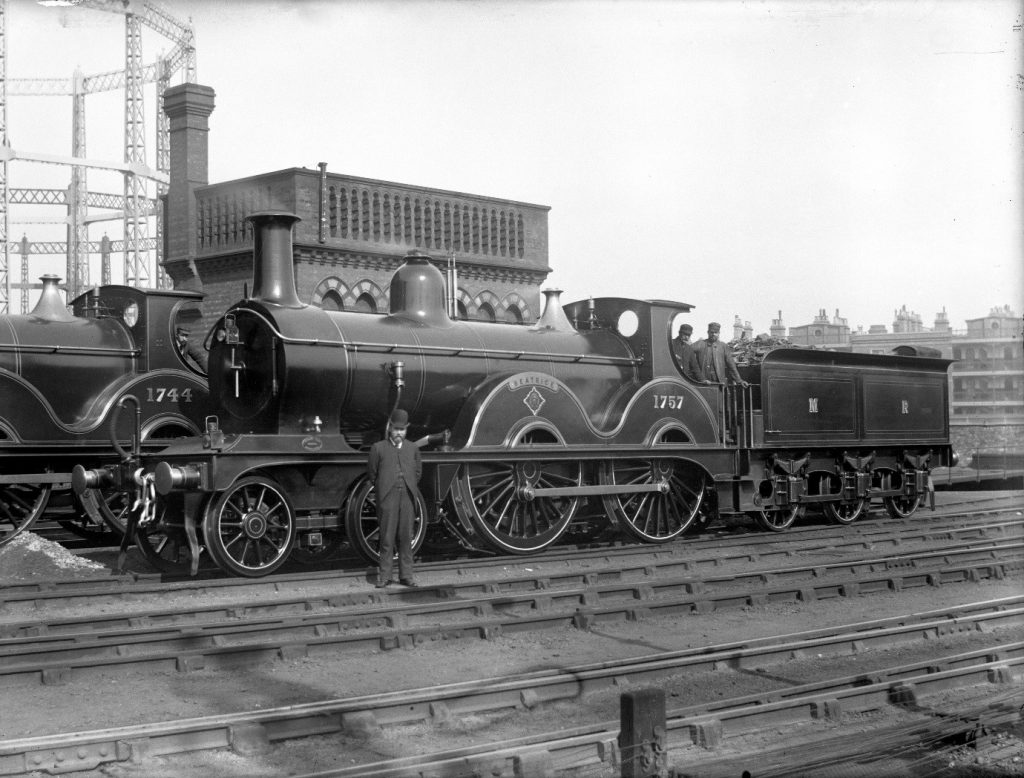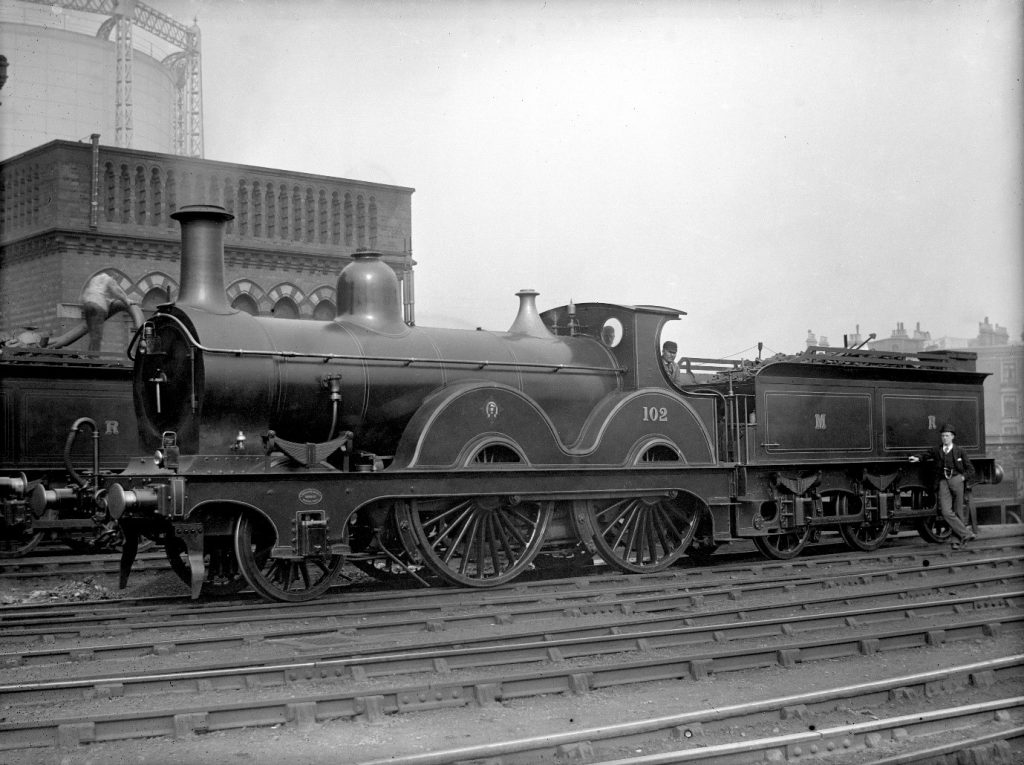One of my favourite collections of photographs was created by the youngest photographer in the museum archive, a 14-year-old Victorian schoolboy called George Tod. The beautifully composed photographs are complemented by a set of letters written by George to his brother James in the mid-1890s. These tell us that his hobby outside school hours was photographing locomotives, especially the most modern ones for the time.
One of his favourite haunts was the Great Western Railway yard at Westbourne Park, London. A locomotive that he was particularly interested in seeing was number 3012 “Wigmore Castle” and on one occasion he was given permission by the foreman to photograph it just before it went out on a service. According to one of the letters, the ensuing photo opportunity was very rushed, with the signalman shouting that there wasn’t time. The resulting photographs didn’t come out well, so George and his companion, Marcus, went back later in the week and this time the “Wigmore Castle” was hauled out especially for them and George took two good photographs of it. One of these was spoilt in development—George did his own developing—but the other “came out very splendidly, not a spot on it and very clear”.

Several of George’s photographs were taken at railway stations, but he also used locations that were not open to the public, like engine sheds and yards where the light was better and locomotives could be put into position for him to photograph. He was not afraid to ask senior managers for permission, but sometimes this became an adventure in itself. To get access to the Midland Railway sheds at Kentish Town he needed to approach the superintendent of locomotives, Robert Weatherburn, who was known to be a formidable character.
“I presented myself tremblingly at his door which was opened after some time by…a man encircled in a cloud of smoke [who] thumped up and yelled at me what I wanted so I showed him the letter and told him plainly what I wanted. At first he shook his head and said no but then he read the letter & said they did not often allow that sort of thing. Then he said I would not interfere with the drivers or anybody, so I informed him that that statement was correct so he said he thought he could allow me…”

It has been suggested that the figure posing in front of the locomotive “Beatrice” is Robert Weatherburn, Superintendent of Locomotives.
George and Marcus enjoyed their visits to St Pancras, especially the time when they jumped onto a locomotive while it was being shunted, “and when it had finished and the other was about to do its shunting, Marcus quickly jumped on it and so got two rides”. It’s impossible to imagine this happening in our more health-and-safety-conscious age.

Could the smartly dressed young man leaning against the tender on the right of the picture be Marcus?
In one of the letters George tells James that he has been given permission by Patrick Stirling, chief engineer of Great Northern Railway, to take photographs at King’s Cross. He and Marcus were delighted to find some brand new locomotives there (designed by Stirling himself). Both boys took photographs.

We don’t know the identities of the two young men posing next to the Great Northern Railway locomotive number 1007, but we can tell from their smart clothes that they are not railwaymen. They are likely to be George’s companions Marcus and Perry, but one of them could even be George himself, if Marcus took the photograph.

It has been suggested that this photograph is of George standing on the footplate of an older locomotive at Kings Cross.
I was intrigued to find out more about George and his family and discovered that Marcus was in fact another of George’s brothers. Their father, John Tod, was a Scottish tea merchant and their mother, Gertrude, was of German origin. She was the daughter of Marcus Von Niebuhr, a privy councillor to the King of Prussia, and she was born at Sans Souci, the royal summer palace near Potsdam. Her grandfather, Berthold Georg Niebuhr, was an illustrious and well-known historian.
The letters bring the collection of photographs vividly to life. They not only let us read about George Tod’s experiences first hand, but they have provided a rich resource for researching his family history and its links to royalty in Prussia.